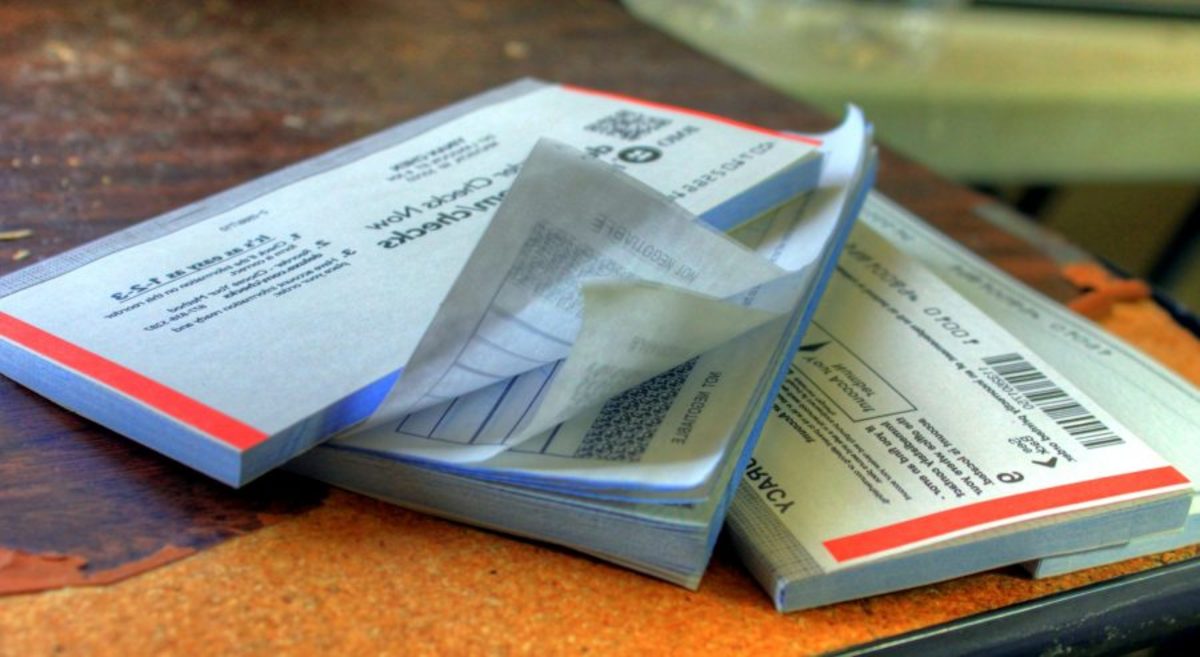Roles of Central Banks- What They Do, and Why are They Important for Our Economy
Central banks are independent non-commercial banking institutions usually owned by the country in which it operates. Central banking regulations are very strict and specific. These laws ensure that central bank remain independent in there communications, operations and decisions. They are at the top level of two tiered banking systems. In each country there can only be one central bank. Central banks have four broad roles in any economy;
- they collect deposits,
- they either guard inflation or/and ensure the growth of the economy,
- they ensure the proper amount of cash, that is money in physical form, to circulate in the economy,
- safeguard the national currency's value from excess fluctuations in short periods of time.
Central banks collect debits from three sources: the government of the country, and from commercial banks registered in the country in which the central banks operate, and the management of money in the economy. Current accounts of the central banks pay only a minimal interest rate, (both to the government and to the commercial banks) if any. If interest is paid , it is always below 1 percent per year.
Traditionally, most european central banks, including the European Central Bank, role is almost entirely to ensure proper inflation rate, and the guarding of the value of the currency, mostly from collapsing only. In the United States, however the central banks of the separate states, as well as the FED (abbreviation for Federal Reserve, the central bank of the US), the general health and growth of the states'/country's economy. Central bank are always not-for-profit organisations, and any losses and shoratges in its operation is always, without exception, paid by the government of the country (however the government may decide to finance from loans from abroad, or on the government debt securities markets).
Actually central banks not only collect debits of governments, they are the ones that handle all account movements of the government. One exception from this is the management of public debts (including the auctioning of treasury bond and treasury bills) in most countries. This is taken care of by a separate instutution dealing solely with this issue.
The second source of revenue for central banks are the obligatory deposits from commercial banks, and short term loans to the commercial banks (central banks may give loans to commercial banks of the country, and almost only to them). The amount (or proportion of, to be exact) deposits, and the regularity of their payments are specified exactly be concerning laws of the country. This amount is set as a percentage of the total liabilities of the specific commercial bank. Liabilities of commercial banks are a sum of two figures, the money that the bank owes, and plus credits and loans that the bank has provided, which have not been downpaid by the loanee yet (but due in periodical installments). This obligation of commercial banks have to purpose, to increase the liquidity of banks (called the solvency of banks), and to increase trust in the banking system of the country (most countries have a second trust-ensuring provision in place, the guarantee of repayment of deposits in case bankrupcy of a bank until a certain amount, usually around 100 000 euros or so). The internationally accepted rate for this obligatory deposit is 8 per cent of liabilities. Commercial banks may decide to deposit a higher rate than the minimum, however the minimum must be paid or the commercial bank is fined by the central bank.
Central banks may also give loans to banks to finance their short term liquidity problems or short term investments. The interest on these loans is the current always very low, if there is any at all. These loans by central banks tend to be below 1 percent per annum.
The third revenue source for central banks is the withdrawal of monetary units, and the loss of money in the economy. This third source of revenue for central banks are nowhere comparable to the amount, impact, and importance of the previouse two methods, as well as highly irregular, and somewhat inpredictable. The way that central bank make money through withdrawing money already circulating in the is the folowing: the cental bank decides that on a specific day (usually one year following the announcement to do so) the central bank will not mint a certain coin or print a certain paper money (called bank notes). At such an event the central bank stops the creation of that monetary unit. Until that amount people can exhange the sum of the face value of those money to a money that remains to exist. This can be exchanged in the central banks, or (usually) in post offices (in turn post offices will exchange them in the central bank). As it is always the case, many people do not exchange that sum, due to various reasons like lack of time, lack of interest to do so, etc. When the specified date arrives, those that people, businesses, etc, that still have that monetary unit, in essence have their wealth decreased, as those monetary units are, worthless, they cannnot buy anything with them. As all monetary units are, legally speaking, a liability of the central bank (ei.: debt of the central bank), monetary units unexchange following the specified date are accounted in the balance sheets of the central bank as profit. Actually, technically speaking they are not accounted as profit, but as they don't have that debt any more, considering the same level of income and the decrease of expenses, that, in the books of the central bank, increase the profit.
The combination of the above two reasons was a good reason for the withdrawal. How the exchanging worked is that anybody could exchange these coins in the central bank or in any post office. The lowest monetary unit that remained in use was the 5 Forint coins and the 10 Forint coins. So, say someone had two 2 Forint coins AND one 1 Forint coin they could exchange them to one 5 Forint coin (2*2+1*1=5). Also ten pieces of 1 Forint coins could be exchanged to one 10 Forint coin, and so on. Following the day of withdrawal, people had billions of 1 Forint and 2 Forint coins that they didn't exchange. Although the figure of how many coins lost their value overnight was not disclosed, rumors said that the Central Bank of Hungary made tens of billions of forints (an equivalent of hundreds of millions of US dollars.)
Lets see a real life example to better illustrate the above system. In 2008, the central bank of Hungary decided to withdraw the following coins: the 1 Forint coins, and the 2 Forint coins (at that time 1 Forint equalled to about 5 USA cents). The Central Bank of Hungary gave two reasons to its decision to withdraw the 1 and 2 Forint coins;
- Reason 1: the minting of these coins costed more than they were worth, that is, their face value. One 1 Forint coin costed about 2 forints to produce (due to high metal prices on world markets), and one 2 Forint coin costed 3-4 Forints to produce,
- The second reason for the withdrawal was that the 1 and the 2 Forint coins were not used in the economy, that is people didn't pay with them. The reason for this is inflation: when these two coins were introduced into the economy the most basic products had much lower price tags.
Money is always lost in the economy. People loose coins, bank notes (paper money), get used up and ripped (when someone exchanges a ripped bank note to a new one, the central bank also makes mones, because that ripped money (debt to the central bank) does not exist any more). As any coin and bank note is a debt by the central bank, their destruction is a gain for the central bank.
Central banks control the currency exchange (ie.: value of a currency), and inflation 4 ways, or the 4 Cs of Central Banks:
- Changing interest rates,
- Communication,
- Currency market transactions,
- Combination of any or all of the above.
The most widely used, and most powerful method of central banks to influence inflation and the currency value of a country is through the modification of base rates. This significance of base rates lies in the fact that this is the interest at which commercial banks registered in the country of the central bank can take loans from the central bank. The reason why banks would need to take loans from the central bank, under normal circumstances, is that commercial bank can further loan that out to businesses and people, at at higher interest rate then the base rate to cover its costs and to make a profit.
The reason interest rates influence inflation is because of price growths of products. If the base rate is low, there are more investment and the economy grows faster (see above paragraph to see why). If employment increases, the number of people able to purchase a product or service also increases, so merchants, producers, etc, can as higher prices, than, say, last year. If interest rates increase, the whole process decreases companies cannot raise their prices as much, so inflation decreases. The reason why Treasury bonds' and Treasury bills' interest rate are also very closely affected by the central bank's interest rate is exactly this. If inflation rate increases, due to more income by companies and people, the government will have higher revenues, so it can spend more, or repay more of its old, preferable highest interest rate debts, or because it has more money can issue new debts at lower interest rate for them, which they can use to repay (also called refinancing) it older, high interest rate debts (say new debts bear interest of 2 per cent and old debts bear interest of 4 per cent). The currency's exchange values against foreign currencies are also infuenced by the base rate. When the central banks interest rate increases, economy also grows faster. If the economy grows faster, people need more of the currency (for example: because more people have a job, more people are paid their monthly salary in that currency), so the demand for the currency increases, so the worth, that is, the value of the currency also increases, so buyers of the currency on the market will accept a lower amount in that currency for their foreigh currency. Of course if the central bank's base rate increases, the whole process decreases, and the currency's value decreases.
The significance of this is that our economy and monetary system is based on loans. The reason loans are so important because loans create additional wealth (creates more money in the economy). This is how its done. Say Company X has an investment opportunity which will earn it say 50 per cent profit, but it doesn't have all the money to enter the investment opportunity (like building a factory which will manufacture a highly profitable product). Say the opportunity costs 2 million dollars to enter, but Company X only has 1 million dollars. Company X applies for, and receives a five year loan at 10 per cent per year. So Company X has to pay about 1.5 miilion bact to the bank with interes and other fees. On the othe hand its investment that yielded 50 percent and costed 2 million, so the company now has 3 million. From the the 3 million 1.5 million is paid back to the bank, leaving 1.5 million to the company, which is 0.5 million more than its starting 1 million dollars.
If the central bank increases the interest rate, commercial banks usually also increase the interest rate at which they give money in loans, (for example for investment). If the interest rate of commercial banks' loans increase, fewer loans will be taken, because investments might not worth it with the higher commercial interest. On the other hand, if the base rate decreases, commercial banks' interest rates also decrease, increasing the econonomic activity. Of course the more investments, the more people are employed, and the government has to pay less unemployment aids.
Trough communication, the central bank can signal what it plans to the market if next time central bank chairmen meet on decision about the interest rate then. Due to the above described effects of interest rates and open market currency interventions, this in itself can influence the markets, but only if the central bank is credible and has a record of being consistent in its actions and words.
The third way central bank can influence the value of a currency is through going out on the currency markets and buying or selling the currency of the country (this is called a trader having a short position or a long position in a currency pair, ex.: USD/EUR). Due to the commonly known supply and demand functionality of the exchange market, the currency's exchange rate changes. The drawback of this method for the central banks is that markets often are too big for the central bank to influence it, especially in the case of small, open economies.
Finally the central bank may decide to use a combination of the above methods. Say it wants to increase inflation (to boost the economy). It might do that by printing more bank notes (more money in circulation in the economy), however this has a relatively longer effect, so it might sell some currency of the forex market, then communicate that if inflation increases to a such and such a rate (this is the inflationary target) it will increase the base rate by between, 10 and 20 basis points (one basis point equals to 0.01 per cent) to smoothen the effects of the previous moves. Or the central bank may go agains the expectations of the market (called market sentiment), and instead of leaving the base rate at its current level it incrases it by say 25 basis points (0.25 per cent). This unexpected move will probable have a large effect.
Conclusion
As you could see central banks have a vital role in our moder financial, and banking system. After reading this article, I hope that you will now better understand how and why securities-, and currency markets react and behave the whey they do following an action or the announcement of a coming action or move by the central bank of a country.







